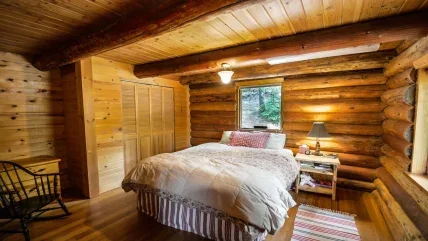
Japan and the regions’s emerging economies are leading Asia out of recession, while France and Germany are spearheading the recovery in Europe. But the outlook for the eurozone overall remains fragile due to its reliance on a world recovery to drive export demand.
In Britain, where preliminary figures indicate that the economy shrank by 0.8% in the second quarter, the Bank of England is now more confident of an early pick-up, although governor Mervyn King warns that recovery “could be slow and protracted”.
City observers stress that the recent pick-up in mortgage lending, house sales and property prices is from a dismal situation at the start of the year, and is largely seasonal rather than a potentially strong and sustained rebound.
Construction activity
In the construction industry, activity fell at its slowest rate for 16 months in July. The CIPS/Markit purchasing managers’ index recorded a drop in activity in all sectors but the contraction in housing speeded up.
Furthermore, construction companies failed to revive their purchasing, despite a reported near-stabilisation of new orders. Buying continued to fall markedly as costs were cut and it eased only marginally on the June level.
CIPS chief executive David Noble said the market will need to improve substantially before the number of new builds returns to that recorded before the credit crunch. According to official estimates the volume of new construction orders rose in total by 18% during the three months to June, but was 21% lower compared with the same period a year earlier. New orders for private-sector housing improved by 25% in the second quarter, but were 33% down on those of a year before.
House sales
The National House-Building Council was notified of an average of 295 daily new home sales during June, compared with 322 in May and 463 12 months earlier.
The mood among UK construction material producers has mellowed slightly, according to the latest quarterly CBI survey. But it remains upbeat, with a balance of 27% of those polled feeling more optimistic about the business situation than three months ago. The decline from 35% in the previous quarterly survey reflects lower expectations about new orders.
In contrast, producers of wood and wood products other than furniture, have become less pessimistic. Three months ago a balance of 37% was less confident than earlier about the business climate, now only 16% feel that way. Poor order-book expectations again account in part for the change in outlook: three-quarters of survey respondents report a downturn in new orders in the past three months, but only one-quarter expect to see a decline in order intake over the coming three months.
Some 18% of respondents expect unit production costs to rise in the coming quarter, but a similar percentage forecast lower selling prices – an improvement on the 48% saying prices had fallen in the previous three months.
Furniture manufactuirng
For furniture manufacturers, the outlook is also for a fall in their factory gate prices, but 8% expect that their unit costs will decline. New orders and domestic deliveries are both set to fall in the next three months, say 15% of those surveyed by the CBI.
The first official estimate of July retail sales of furniture indicates a rebound in volumes since April 2008, with the first year-on-year gain, albeit of just 0.4%. In current price terms furniture sales rose by a yearly 2.1%. In total, retail sales volumes rose by 0.4% during July, to give an annual gain of 3.3%.
But unemployment is rising, accounting for 7.8% of the workforce compared with 5.4% a year ago, while earnings growth remains subdued with wages rising by just 2.5% in the year to the second quarter. In the view of some analysts, these factors, together with looming tax rises, combine to make the medium-term outlook for consumer spending weaker than the present spending recovery suggests.





